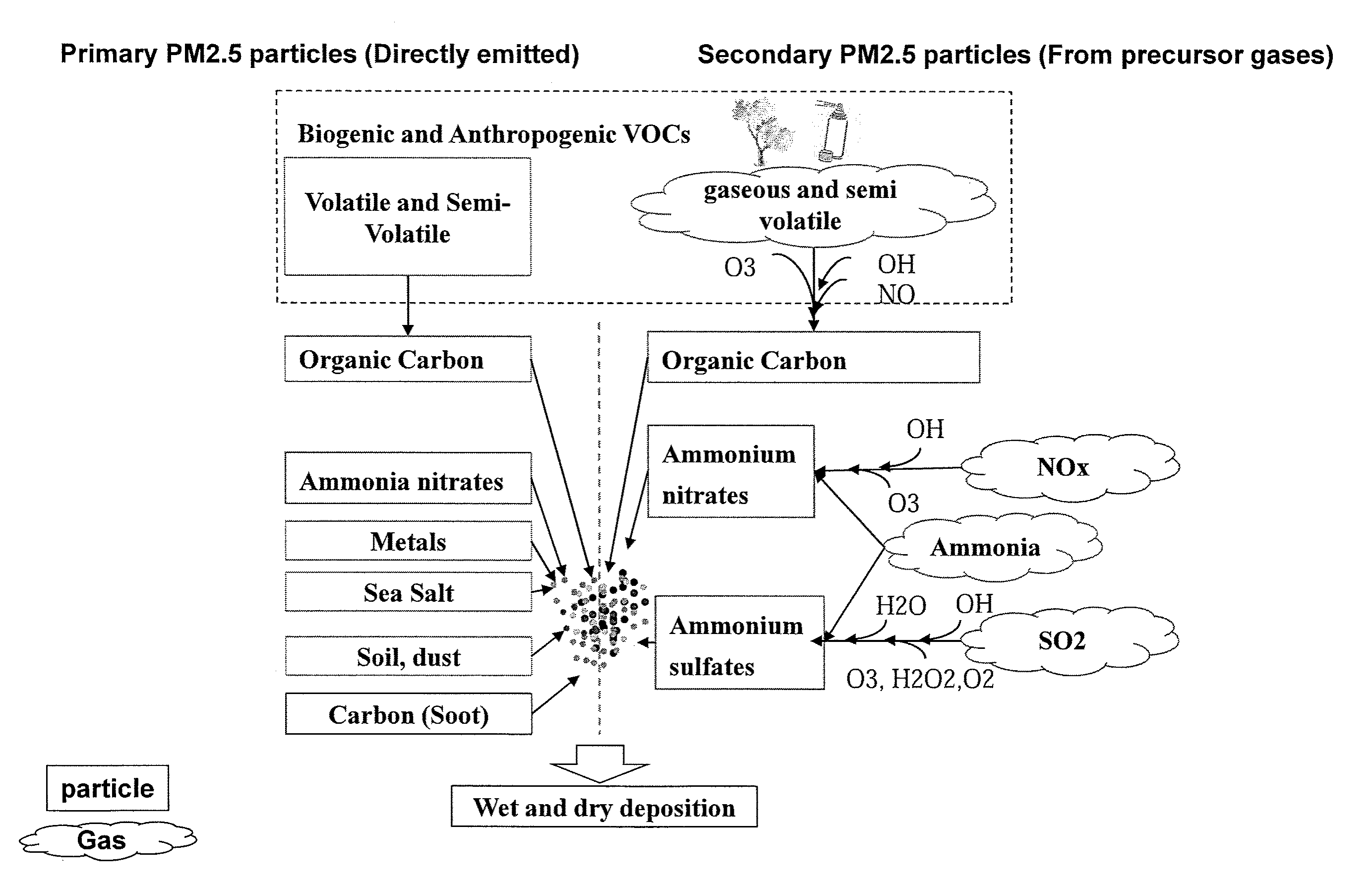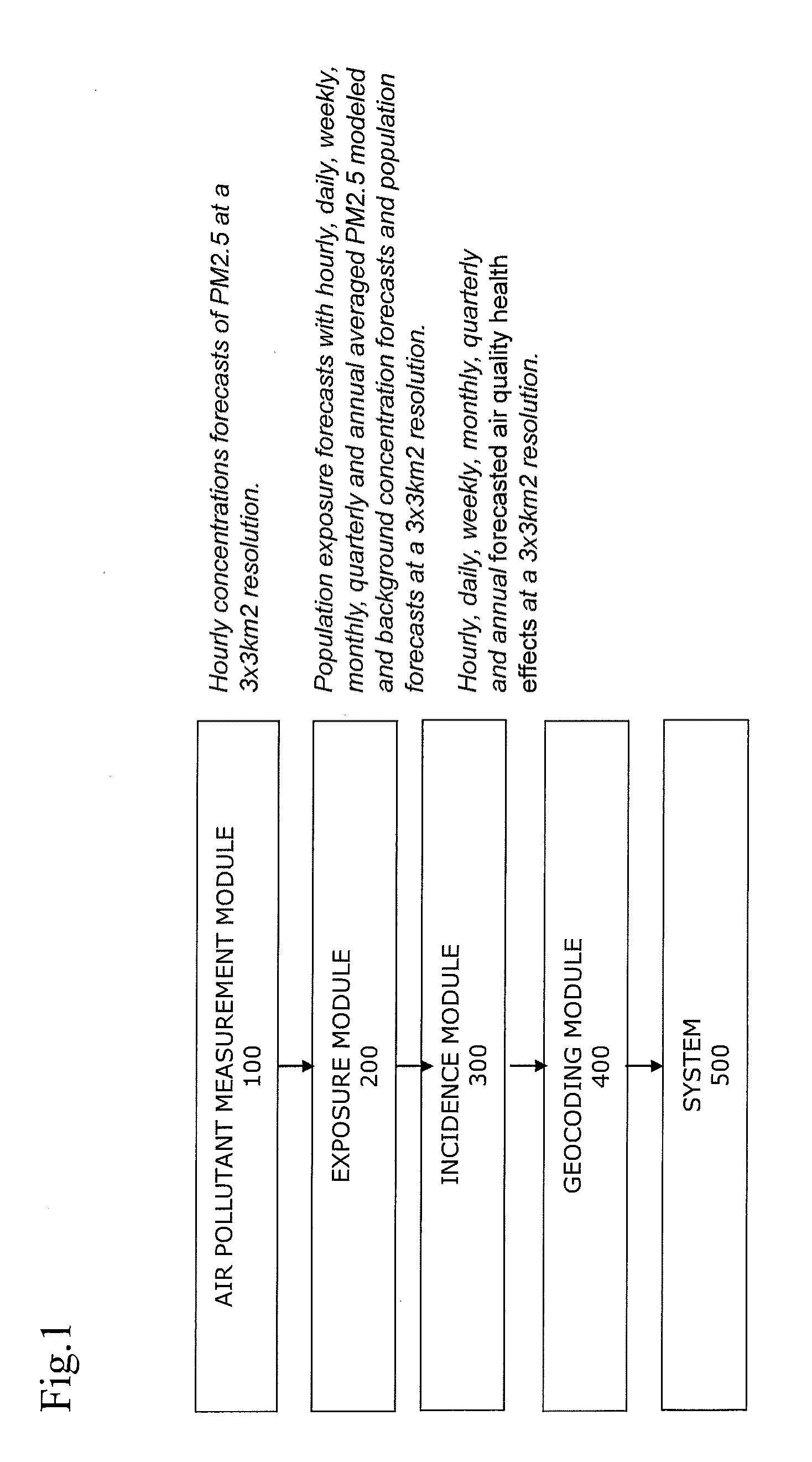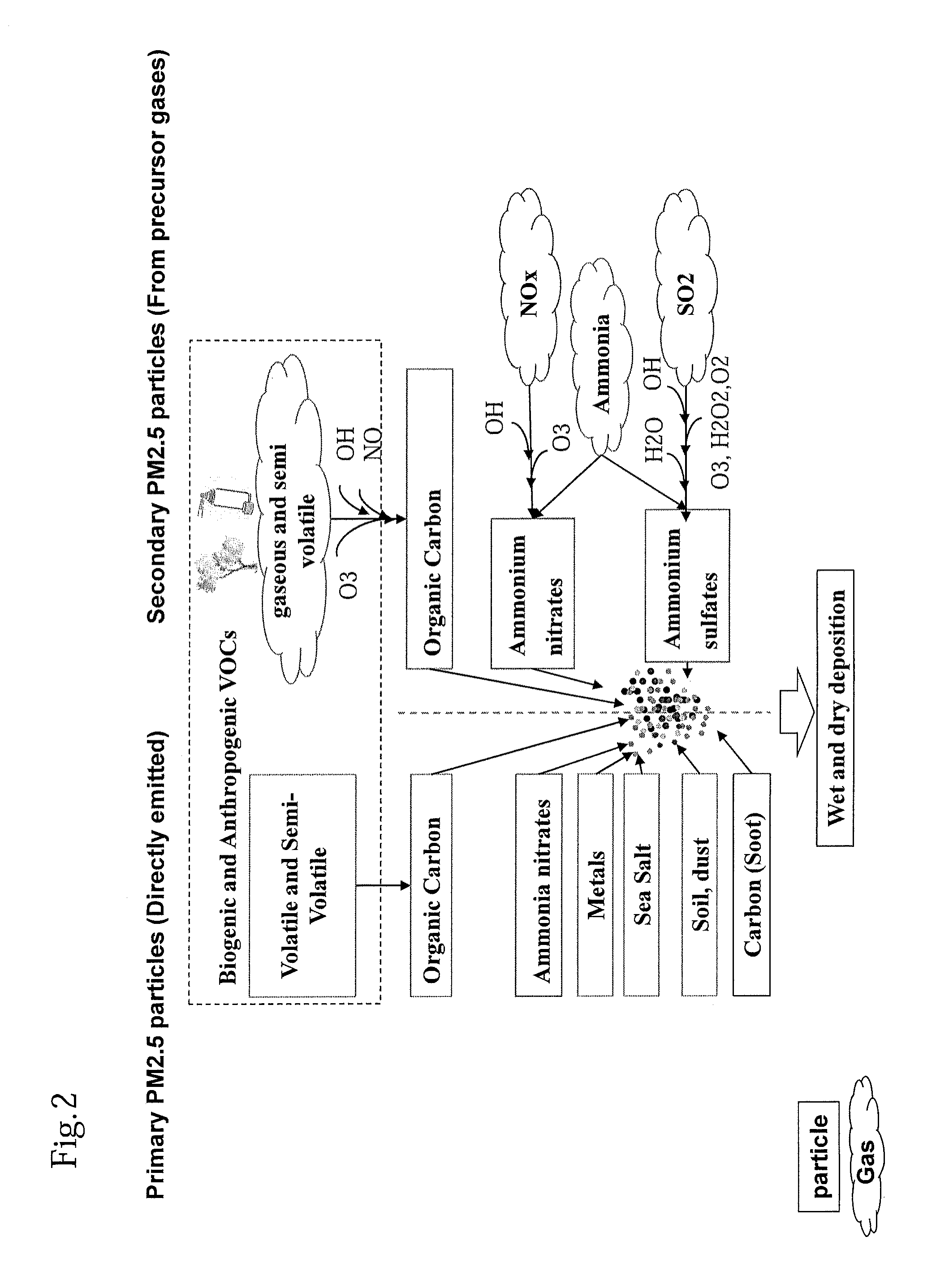Method and a System for Determining at Least One Forecasted Air Quality Health Effect Caused in a Determined Geographical Area by at Least One Air Pollutant
a technology of air pollution and health effects, applied in the field of methods and systems for determining at least one forecasted air quality health effects caused in a determined geographical area by air pollutants, can solve the problems of no method for precisely determining health effects, and the risk of developing harmful health effects when exposed to air pollutants
- Summary
- Abstract
- Description
- Claims
- Application Information
AI Technical Summary
Benefits of technology
Problems solved by technology
Method used
Image
Examples
Embodiment Construction
[0089]FIG. 1 presents, in a general manner, the different steps of the method according to the invention. The invention concerns a method and an accurate system to prevent health effects of an air pollutant in a determined geographical area, in particular in an area of which the surface is between 1 km2 and 10,000 km2. The method is initially presented for asthma and fine particles PM2.5 on the United States and the same process is used for the other health effects, air pollutants and geographies.
[0090]I. Asthma
[0091]1. Air Pollutant Measurement Module
[0092]Since greenhouse gases are air pollutants, the method described in US 2013 / 01790178 A1 is applied to the air pollutant measurement module (block 100) to accurately measure the hourly concentrations of fine particles PM2.5 on a predetermined geographical area from 1 km2 to 10,000 km2. For any other pollutants, the same method is used. These pollutants preferably include halogen compounds such as fluorine (F), chlorine (Cl), bromin...
PUM
| Property | Measurement | Unit |
|---|---|---|
| geographical area | aaaaa | aaaaa |
| geographical area | aaaaa | aaaaa |
| diameter | aaaaa | aaaaa |
Abstract
Description
Claims
Application Information
 Login to View More
Login to View More - R&D
- Intellectual Property
- Life Sciences
- Materials
- Tech Scout
- Unparalleled Data Quality
- Higher Quality Content
- 60% Fewer Hallucinations
Browse by: Latest US Patents, China's latest patents, Technical Efficacy Thesaurus, Application Domain, Technology Topic, Popular Technical Reports.
© 2025 PatSnap. All rights reserved.Legal|Privacy policy|Modern Slavery Act Transparency Statement|Sitemap|About US| Contact US: help@patsnap.com



